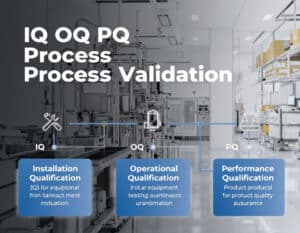The free Software Engineer Scorecard™ permits a quick self-evaluation of your knowledge in all main software and programming engineering domains. By distributing a given number of points, proportional to your experience and know-how among these domains, it visually identifies areas of strength and specialties to your target role. By understanding where you stand, you can pursue targeted learning or close skill gaps if judged so. From an HR perspective, it helps in a job description to build the profile of a software engineering open position.
Software Engineer Scorecard™
كيف يعمل: the goal this Software Engineer Scorecard™ is to perform a self-evaluation, or help on a job description (job-desk) of an open job position. You have a certain amount of “points”, representing experience, know-how, and knowledge to distribute on an interactive graph among 18 main software engineering domains. بعض التخصصات متداخلة جزئيًا (على سبيل المثال: DevOps وواجهات برمجة التطبيقات، أو Web Dev و الأمن السيبراني) والالتزام باختيار المجال المفضل. القطاع التجاري بحيث لا تؤخذ المهارات الشخصية في الاعتبار.
The maximal score for each domain is 20. This 20 must be considered as achievable for a good expert in that domain after many years. It should not be considered as the exception, not the Steve Wozniak nor Linus Torvalds. Neither the score you never give because “you can always progress” (despite we agree of course).
الامتناع عن وضع الجميع على أنهم متساوون أو قريبون من 10 على أنهم متوسطون؛ فلا أحد سويسري سكين.
"في 0 أو قريبًا من ذلك لا توجد مشكلة. أنت لست سيئاً في شيء ما، ولكنك متخصص في شيء آخر."
As one always has “not enough points because I am a special case”, it obliges to focus on one’s few core domains. It also forces to evaluate how a specialty diploma rates versus many years of experience in that domain (ex.: a PMP official certification vs many years as Project Manager). The key software engineering domains proposed are:
- Frontend Development & تجربة المستخدم: designing and implementing the user interfaces that users interact with directly in web or mobile applications. Enhancing user satisfaction by improving the usability, accessibility, and targeted التواصل of software products.
- Backend Development: building and maintaining server-side logic, databases, and application programming interfaces (APIs).
- DevOps: integrating development and operations to automate software delivery, infrastructure management, and monitoring. Automating the building, testing, and deployment of software.
- Data & Database Management: designing, implementing, and optimizing data storage solutions using SQL and NoSQL databases. Building pipelines and tools to collect, process, store, and analyze large-scale data.
- Cloud Computing: leveraging cloud platforms and services like AWS, Azure, or GCP to deploy and scale applications.
- Mobile Development: Creating applications specifically for mobile devices on platforms like iOS and Android.
- Embedded Systems: developing software for specialized hardware devices with constrained resources and hardware.
- Security & Cybersecurity Engineering: ensuring the application is secure through robust authentication, authorization, and vulnerability mitigation. intrusion testing, Red Teaming …
- Performance Optimization: analyzing and enhancing software to ensure efficient speed, memory usage, and scalability.
- API deployment, Integration & Microservices: designing modular, loosely-coupled services and defining interfaces for communication between them. Connecting and consuming third-party or internal APIs to extend software capabilities.
- Software Architecture: laying out high-level structures and patterns that shape the system’s organization and maintainability.
- Algorithm Design: developing efficient algorithms to solve complex computing problems.
- Machine Learning & AI: developing intelligent algorithms and incorporating learning models to automate or enhance software functionalities.
- Interactive, Multimedia or Game Development: creating engaging, interactive, multimedia, and high-performance digital games using specialized engines and frameworks.
- Web Development: building and maintaining websites and web applications using modern frameworks and technologies.
- System Administration: managing and configuring the infrastructure and operating systems underlying applications.
- Version Control, Testing, Technical Documentation & QA: tracking and managing changes to codebases. Systematically testing software to ensure quality, reliability, and performance المعايير. Writing clear, accurate, and comprehensive documentation for software systems, APIs, and architectural decisions.
- Project & Product Management: planning, executing, and overseeing development projects to deliver software that meets business requirements.
|
Software Engineer Scorecard™ |
|
| سنوات الخبرة | إجمالي النقاط الموصى بها |
|
0 (المدرسة/الجامعة) |
|
| 1-5 | |
| 6-15 | |
| 16+ | |
ارسم بطاقة نتائجك
يمكن لك أو لمؤسستك تغيير العدد الإجمالي للنقاط، اعتماداً على التجربة، ولكننا نقترح خط الأساس التالي
- انقر على اليمين على مجموع النقاط المتعلقة بسنوات خبرتك. بدلاً من ذلك، يمكنك إدخال قيمة مخصصة في the grey cell below.
- حرّك جميع الخطوط الحمراء إلى اليسار أو اليمين حسب الرغبة لتوزيع النقاط. اضغط بالماوس على أي عنوان موضوع للحصول على معلومات أكثر تفصيلاً.
- احفظ لقطة خاصة بك بطاقة الأداء عند الانتهاء.

Software Engineer Scorecard™
مجموع نقاط الخبرة والدراية والمعرفة: المتبقي للتوزيع 0











Interesting concept, but can a scorecard truly quantify a software engineers creativity and problem-solving skills?
منشورات ذات صلة
استراتيجية مكافحة التلوث والغرف النظيفة: 26 أفضل الممارسات
من GMP إلى cGMP: دليل الإتقان الكامل
التحقق من صحة عملية IQ OQ PQ: النظرية الكاملة والتطبيق العملي
استراتيجيات "الجوز الوحيد"، و"التابع الأول"، و"التابع السريع"
أفضل 20 استخدامًا للوكلاء في الهندسة
كيفية بيع الثلج للإسكيمو (أو بالأحرى حيل التسويق)